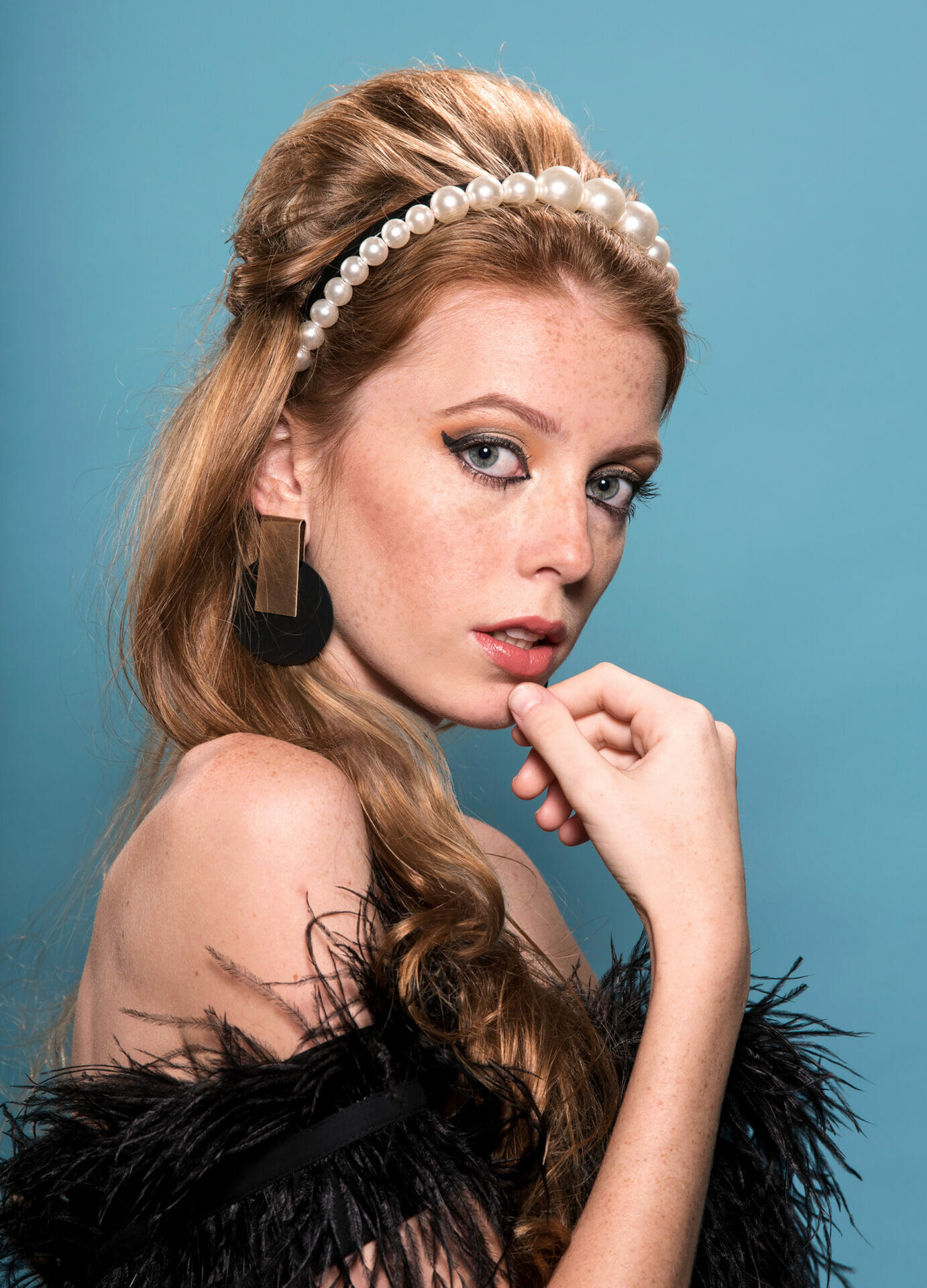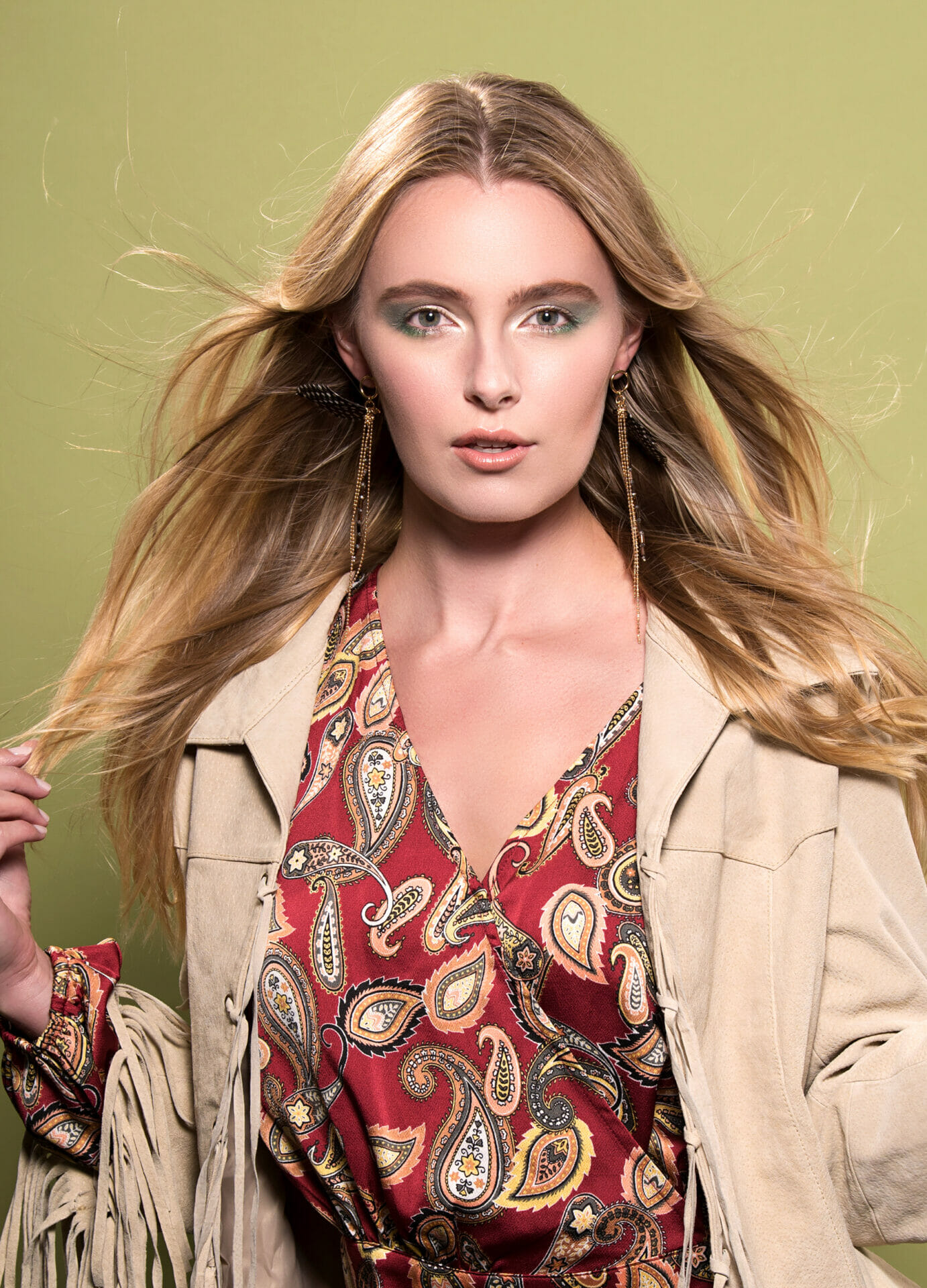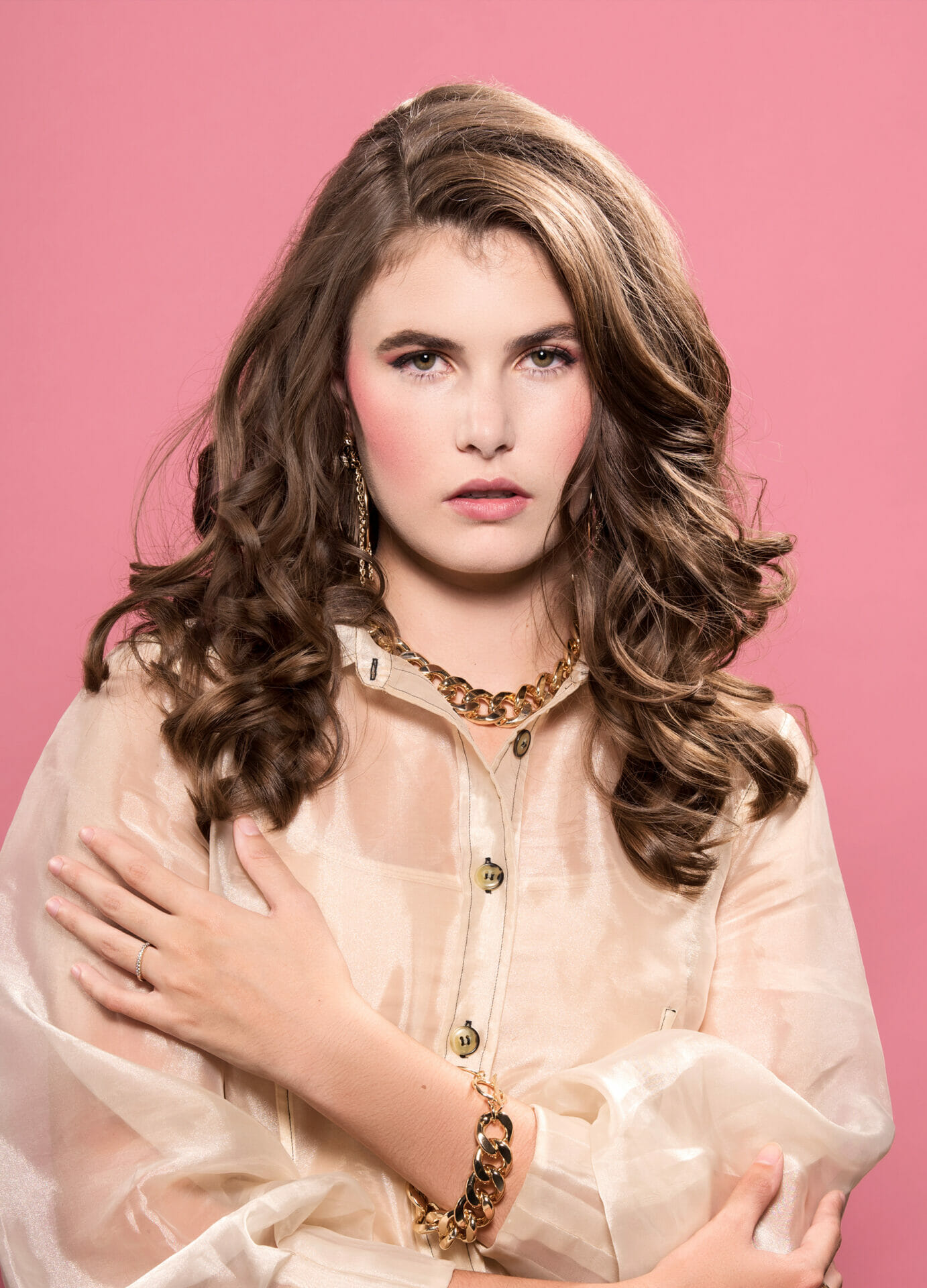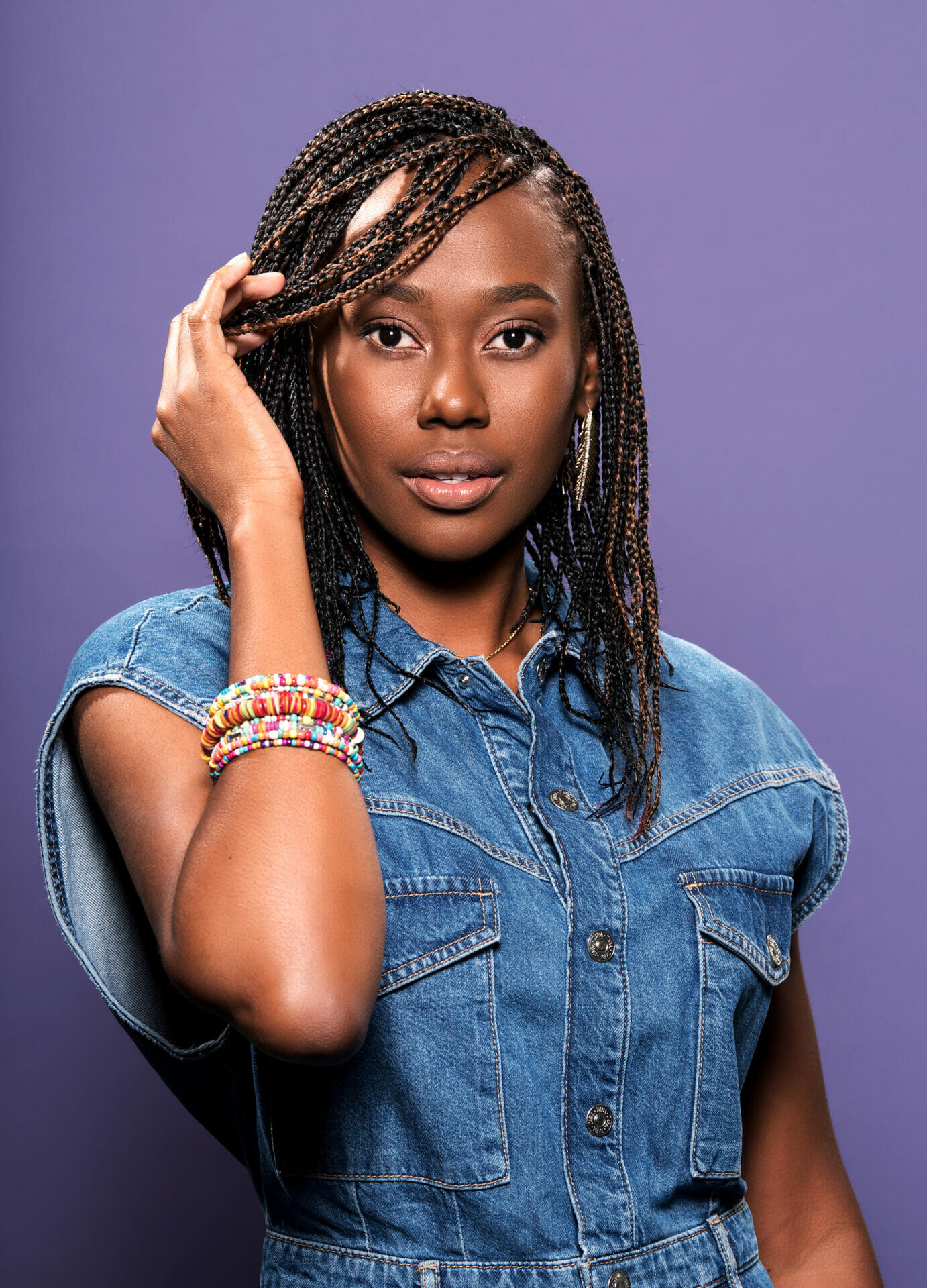Photography by Michael Giragosian
“The higher the hair, the closer to God,” they say. Or at least that’s what I was told growing up in the South.
Early on, I was taught that Southern women care for their hair. This lesson started with the number-one rule: “A Southern woman never leaves the house with her hair wet.”
Throughout the years, I’ve watched as my mother’s style evolved into the latest trends, and her greatest discipline was that of a Southern woman, regularly visiting the local hair salon and never missing a nail appointment.
The smell of perm solution, the sound of blow dryers, women gasping, and laughing; for young Southern girls the salon is a place of discovery where you learn the do’s and don’ts of a Southern woman. Having your hair properly blown out, washed, and/or curled is a form of Southern elegance.
In a healthy community, the salon can be more than just Hollywood’s depiction of “gossip central.” It is a community of women, a safe space to exchange ideas and dreams, to leave feeling a little better about yourself inside and out, regardless of what awaits outside the salon doors.
Instinctively, one could argue that these rules no longer apply and to some degree feel antiquated. But, right or wrong, these rules are the foundation of hair culture. And understanding why generations of women hold these sacred spaces and traditions with hair very near and dear to their hearts can be indicative to understanding the business of hair and its influence in pop culture.
In Lakeland, if you’re a hairdresser and good at your craft, your schedule is always full. According to the Community & Economic Development of Lakeland, there are 627 hairdressers out of 6,056 registered businesses, equating to 10.35 percent of registered businesses within city limits. To say Southern hair culture is prominent around here would be an understatement.
Historically, Southern women have been creating big, voluminous waves and have arguably been the most influential when it comes to hairstyle trendsetting, from chic and memorable updos like Aretha Franklin’s 1960s’ mile-high beehive to well-coiffed styles such as Farrah Fawcett’s blonde feathered waves in the 1970s.
They say history repeats itself, and these classic hairstyles are indicative of that. Here are some of the most iconic hairstyles over the years and their modern interpretations.
‘60’s
The Bouffant & The Beehive

Styled by Venue Salon | Model: Kloie Whitman –BMG Models
earrings: Dillard’s Lakeland, headband: Zara, Vince Camuto dress: Dillard’s Lakeland
An evolution of late-1950s’ hairstyles, the bouffant and the beehive led the way in 1960s’ hairstyles.
The bouffant varied in size depending on personal taste, from perfectly rounded and tamed to big and teased all over. Iconic women filled the 1960s with their interpretations of the bouffant — from Jackie Kennedy and Jane Fonda’s teased, flipped-up, smooth-and-sleek bobs to 1960s’ film actresses like Raquel Welch and Nancy Sinatra’s longer locks and teased waves. Style icons such as Catherine Deneuve and Brigitte Bardot paired the bouffant with ribbons and headbands, often transitioning into the beehive. The beehive was considered an elegant, perfectly sleek updo compared to the bouffant.
[modula id=”23489″]
Today, the bouffant’s and beehive’s modern interpretation tends to focus on the side of subtlety creating the perfect opportunity to elevate any outfit with a statement headband.
‘70’s
The Feathered Look

earrings: Dillard’s Lakeland, top: Zara, jacket: vintage
Although there were a variety of popular hairstyles during the 1970s, one of the most iconic was Farrah Fawcett’s feathered hairstyle in her role as Jill Munroe on Charlie’s Angels. Unlike the 1950s and 1960s, volume was no longer concentrated at the top and crown of the head; instead, the volume was focused toward the ends for an effortlessly sexy look.
[modula id=”23490″]
This hairstyle clearly defined the 1970s’ era. Fawcett’s flipped-out and feathered hairstyle has been reinterpreted through the years making it one of the most popular hairstyles of all time. As was the case of Fawcett’s 1970s style, “Curl away from your face,” says every hair stylist and beauty blogger to date. Also inspired by this iconic look, curtain bangs are in.
‘80’s
The Perm

Styled by Venue Salon | Model: Sara Hicks – Michele Pommier Models
accessories: Dillard’s Lakeland, blouse: GANNI
Teased, curly hair was the name of the game in the 1980s, and if you weren’t lucky enough to have naturally curly hair, it was time for you to book an appointment and ask for the permanent-wave hair treatment, also known as the “perm.” The perm was a chemically altering process for your hair, with the outcome being small, tight, teasable curls. Inspired by rock bands and edgy style, volume was in and so were perms. Whitney Houston, Janet Jackson, and even Julia Roberts were known for their big hair.
[modula id=”23491″]
In modern times, we haven’t completely pivoted away from the volume, just the unnecessary frizz and tease. With hundreds of products out there and even the blow dryer’s diffuser attachment, voluminous soft curls are achievable and way healthier for your hair.
‘90’s
Box Braids Bob

Styled by Relax It’s Natural Salon | Model: Louina Lafalaise Kent – Alexa Models
accessories: Dillard’s Lakeland, romper: Zara
Brandy (or as I remember her, “Moesha”) is and always will be the box braids bob queen. The 1990s was a defining decade for black hairstyles. Brandy was at the forefront of this iconic moment with her signature braids bob worn on the TV show Moesha. Jada Pinkett Smith and Lauryn Hill were also seen rocking the box braids bob in 1990s’ Hollywood films. This style is chic, and it is back.
[modula id=”23492″]
